The Complete History of Stir Fry: 1,500 Years from Ancient China to Your Kitchen
The Complete History of Stir Fry: From Han Dynasty Origins to Global Phenomenon
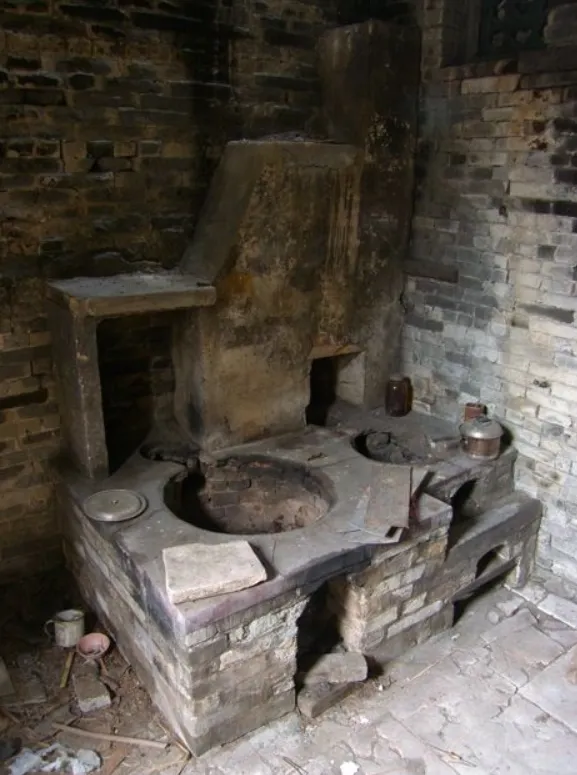
The sizzling sound of ingredients hitting a blazing hot wok is now heard in kitchens worldwide, but this iconic cooking technique has a fascinating 1,500-year journey from ancient Chinese fuel conservation to global culinary phenomenon. Understanding stir fry's rich history reveals why this technique became the foundation for countless regional cuisines and why mastering proper wok techniques remains as relevant today as it was centuries ago.
Ancient Beginnings: The Birth of a Technique (Han Dynasty - 6th Century)
The Humble Origins of "Chao"
Stir frying's story begins far earlier than most food historians realize. During the Han Dynasty (206 BC – 220 AD), archaeological evidence shows early wok-like vessels were used primarily for drying grain rather than cooking food. These early pottery models, found in Han Dynasty tombs, represent the embryonic stage of what would become one of the world's most influential cooking techniques.
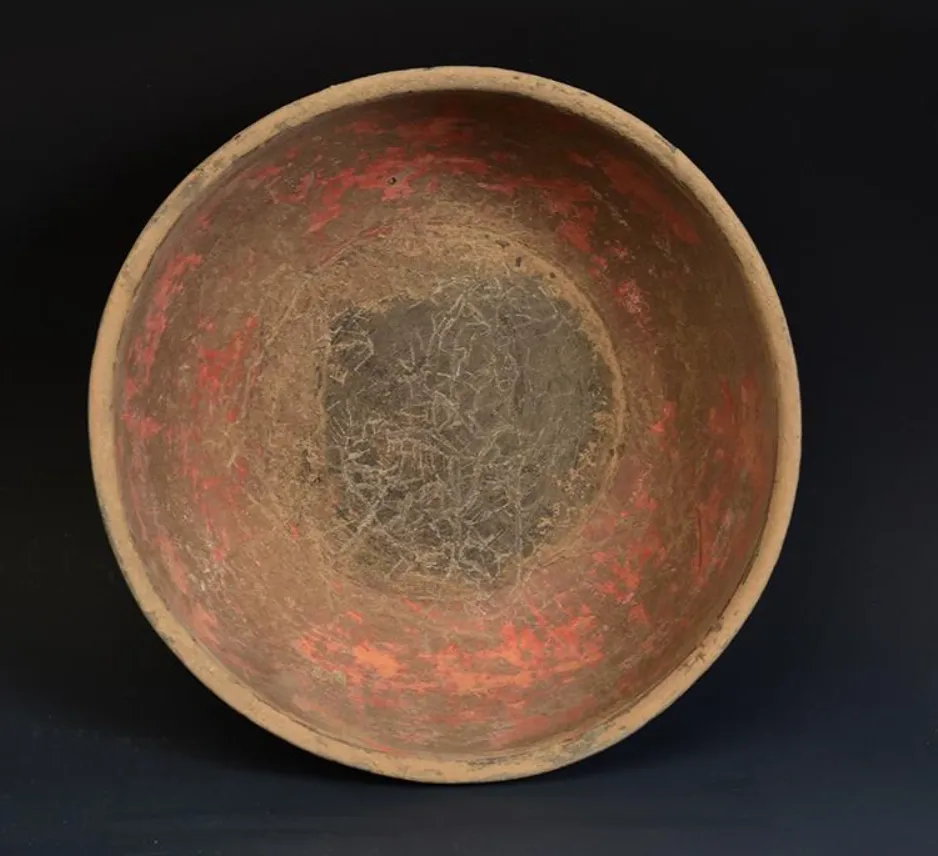
The earliest written reference to "chao" (炒) appears in the 6th-century agricultural manual Qimin Yaoshu, which includes what may be history's first stir-fry recipe: scrambled eggs. This simple dish represents a pivotal moment—the transition from using high heat for preservation to creating entirely new flavors and textures.
The Tang Dynasty Tea Connection
Interestingly, during the Tang dynasty (618–907), the term "chao" referred not to cooking food, but to roasting tea leaves. This linguistic evolution reflects how Chinese society was experimenting with high-heat, rapid-movement techniques across different applications. The principles learned from tea roasting—constant motion, precise heat control, and timing—would prove foundational to food stir-frying.
The Song Dynasty Revolution: True Culinary Innovation (960-1279)
When Stir-Frying Became Cooking
The Song dynasty marks the true birth of stir-frying as we know it. Approximately a dozen recipes from this period demonstrate sophisticated understanding of the technique, moving far beyond simple egg scrambling to complex multi-ingredient dishes. This era also witnessed a crucial innovation: Chinese cooks began using vegetable oils instead of animal fats for frying.
This shift to plant-based oils wasn't merely culinary—it was revolutionary. Vegetable oils allowed for higher cooking temperatures without the burning and off-flavors associated with animal fats, enabling the development of techniques that would eventually create wok hei, the legendary "breath of the wok."
The Economics of Innovation
Song dynasty urbanization created the perfect conditions for stir-frying's development. As cities grew and fuel became more expensive, home cooks needed techniques that could produce flavorful meals quickly and efficiently. Stir-frying answered this need perfectly, creating complex flavors with minimal fuel consumption.
The Wok Revolution: Ming Dynasty Mastery (1368-1644)
Convergence of Technology and Technique
The late Ming dynasty represents the true convergence of all elements that define modern stir-frying. Wood and charcoal were becoming increasingly expensive near urban centers, making fuel efficiency crucial. Stir-frying could cook food quickly without waste, making it economically attractive to families across social classes.
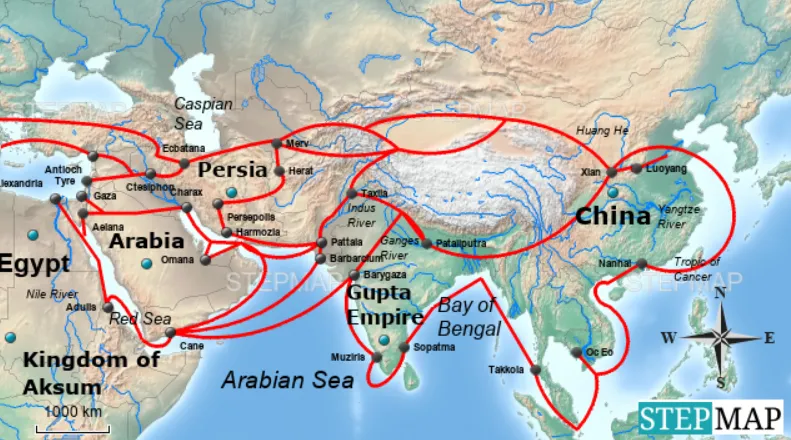
During this period, the wok reached its optimal shape—the deep, rounded form that maximizes heat efficiency while enabling the tossing motions essential to proper technique. The science behind wok design reveals why this shape became standardized: it creates distinct temperature zones that allow simultaneous cooking and warming of different ingredients.
Metal Woks Enter the Scene
While earlier woks were clay or pottery, the Ming dynasty saw the widespread adoption of metal woks, particularly iron and early steel versions. These materials could withstand higher temperatures and provided better heat conduction, enabling the development of advanced techniques that required precise temperature control.
The Western Introduction: Etymology and Early Adoption
Buwei Yang Chao's Linguistic Legacy
The English term "stir-fry" has a surprisingly recent origin. It was coined by Buwei Yang Chao in her groundbreaking 1945 book "How to Cook and Eat in Chinese." Her translation of the Chinese word chǎo (炒) as "stir-fry" was accompanied by her detailed definition: "big-fire-shallow-fat-continual-stirring-quick-frying of cut-up material with wet seasoning."
This definition remains remarkably accurate today and demonstrates the precision required for authentic stir-frying. Yang Chao's work bridged Eastern technique with Western understanding, making stir-frying accessible to American home cooks for the first time.
The 1970s Health Revolution
Stir-frying gained massive popularity in the West during the health-conscious 1970s, when it seemed "everyone was buying woks." The technique perfectly aligned with emerging nutritional understanding: quick cooking preserved vitamins, minimal oil reduced calories, and the emphasis on vegetables supported dietary guidelines promoting plant consumption.
Global Spread Through Chinese Diaspora
Adaptation and Innovation Across Continents
The global spread of stir frying follows Chinese immigration patterns from the late 19th century onward. Chinese immigrants carried their woks and techniques to diverse destinations: Peru, Trinidad, New Zealand, Fiji, Indonesia, Jamaica, Libya, Holland, India, South Africa, Burma, and Germany.
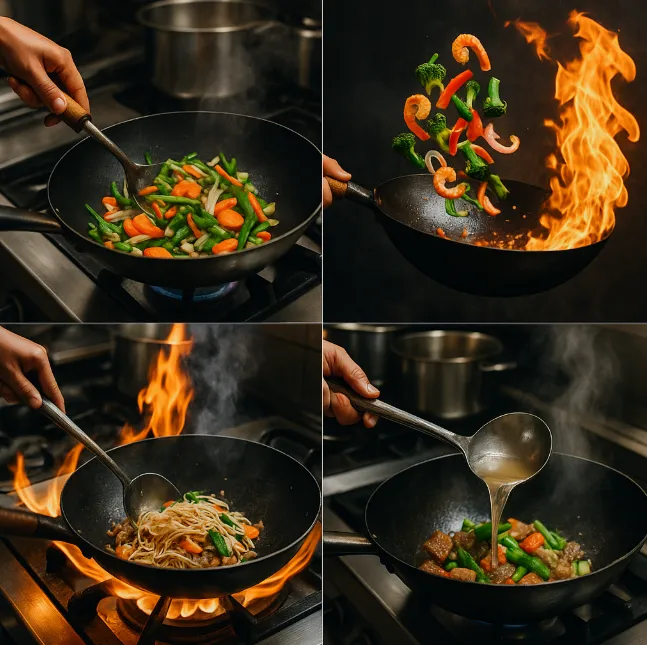
Each destination required creative adaptation. In regions where Asian ingredients were scarce, Chinese cooks made ingenious substitutions:
- Cauliflower stems replaced Chinese broccoli
- English pea pods substituted for snow peas
- Potatoes took the place of lotus root
- Turnip greens with salt pork replaced bok choy
These adaptations weren't compromises—they were innovations that created entirely new flavor profiles while maintaining essential stir-frying principles.
Regional Evolution: From Technique to Cuisine
Japanese Refinement: The Chukanabe Tradition
Japan's adoption of Chinese stir-frying techniques created Japanese chukanabe cooking, characterized by precision, restraint, and technical excellence. Japanese chefs refined stir-frying into an art form, developing specific techniques for Japanese woks that emphasized control over power.
The Japanese approach influenced dishes like yakisoba, chahan (Japanese fried rice), and gyoza preparation, each requiring slightly different heat management and timing than their Chinese predecessors.
Korean Innovation: Junghwa Yori
Korean wok culture created Junghwa Yori—Korean-Chinese fusion cuisine that produced iconic dishes like jajangmyeon, jjamppong, and tangsuyuk. These dishes demonstrate how stir-frying techniques could be adapted to incorporate Korean flavors while maintaining Chinese technical foundations.
Vietnamese Precision: The Art of Xào
Vietnamese wok mastery developed its own character, emphasizing freshness and a "drier" approach to stir-frying. Vietnamese cooks perfected techniques for dishes like thịt bò lúc lắc (shaking beef) and rau muống xào tỏi (stir-fried morning glory), each requiring precise heat control and timing.
The Science Behind Ancient Wisdom
Understanding Traditional Techniques Through Modern Analysis
Modern food science validates what Chinese cooks discovered centuries ago. Traditional stir frying involves two primary techniques:
Chao Technique: Adds liquid during cooking, resulting in softer ingredients similar to Western sautéing. This method preserves water-soluble vitamins while creating complex flavor interactions between ingredients and seasonings.
Bao Technique: Creates crispier results through the Maillard reaction using higher heat. This technique requires precise timing and heat control, as the window between perfect browning and burning is measured in seconds.
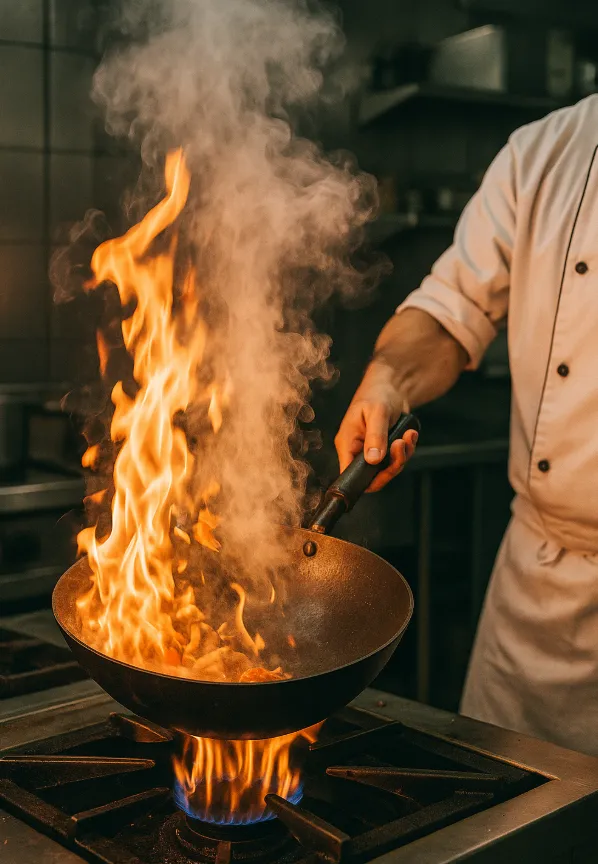
The Wok Hei Phenomenon
The concept of "wok hei" (鑊氣)—literally "breath of the wok"—represents the pinnacle of stir-frying technique. Achieved through cooking at temperatures exceeding 200°C (392°F), wok hei creates complex flavors through:
- Caramelization of natural sugars
- Maillard reactions between proteins and sugars
- Partial combustion of oil creating aromatic compounds
- Steam reactions that concentrate flavors
Understanding how to achieve wok hei at home requires mastering the interplay between heat, timing, and technique that Chinese cooks have refined over centuries.
Modern Validation: Health Benefits Confirmed
Scientific Research Supports Traditional Wisdom
Recent nutritional studies validate the health benefits Chinese cooks intuitively understood. Research comparing boiling, steaming, and stir frying found that stir frying preserved significantly more vitamin C (78.9% retention) compared to other cooking methods.
Modern nutritionists identify several key advantages:
- Minimal oil requirement reduces caloric density
- Flash-cooking preservation maintains water-soluble vitamins
- Versatile ingredient combinations enable balanced nutrition
- High vegetable content supports dietary fiber intake
- Quick cooking times preserve heat-sensitive nutrients
Addressing Modern Dietary Needs
Stir-frying perfectly addresses contemporary nutritional priorities: it emphasizes vegetables, requires minimal added fats, preserves nutrients through quick cooking, and allows precise control over sodium and sugar content through sauce management.
The Wok's International Family
Related Vessels Across Asia
The Chinese wok belongs to an international family of similar cooking vessels, suggesting either shared origins or convergent evolution based on similar cooking needs:
- Karahi (South Asia): Deep, curved vessel for high-heat cooking
- Kuali (Southeast Asia): Similar shape and function to Chinese woks
- Penggorengan (Indonesia): Regional adaptation for local ingredients
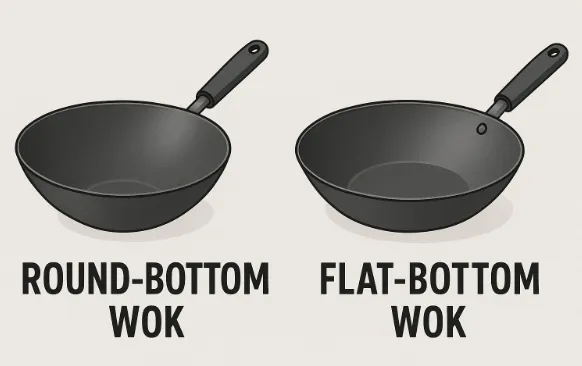
Many scholars believe the Chinese wok may have evolved from these similar vessels, possibly entering China via Central Asia from India. This international perspective explains why stir-frying techniques adapted so readily to global cuisines—the fundamental principles were already familiar to many cultures.
Modern Innovations and Future Directions
Technology Meets Tradition
Today's stir-frying embraces modern technology while maintaining traditional principles. Innovations include:
Equipment Adaptations: Flat-bottomed woks for Western stoves, induction-compatible designs, and specialized burners that recreate traditional high-heat conditions in modern kitchens.
Material Sciences: Modern carbon steel wok manufacturing combines traditional techniques with contemporary metallurgy, creating vessels that outperform historical examples while maintaining authentic characteristics.
Educational Resources: Video tutorials, precise temperature monitoring, and scientific understanding of cooking processes help modern practitioners master techniques that were traditionally learned through apprenticeship.
Sustainable Cooking Practices
Stir-frying aligns perfectly with modern sustainability goals:
- Energy efficiency through quick cooking times
- Reduced food waste through complete ingredient utilization
- Plant-forward nutrition supporting environmental health
- Minimal equipment requirements reducing material consumption
Cultural Impact and Fusion Evolution
American Chinese Innovation
American Chinese cuisine developed its own stir-frying characteristics, often using more soy sauce and adapting to local ingredient availability and taste preferences. Dishes like chop suey became emblematic of how traditional techniques evolved to create entirely new cuisines.
This fusion wasn't cultural dilution—it was creative adaptation that maintained essential techniques while creating flavors that resonated with new audiences. The success of American Chinese restaurants helped popularize stir-frying techniques among non-Chinese cooks.
Global Fusion Continues
Contemporary fusion cuisines continue this tradition of adaptation:
- Indonesian mie goreng evolved from Chinese chow mein
- Bengali jalfrezi incorporates stir-frying techniques with Indian spices
- Latin American-Chinese fusion creates unique flavor combinations
- European interpretations adapt techniques to local ingredients and preferences
The Future of Stir-Frying
Preserving Tradition While Embracing Innovation
Modern stir-frying faces the challenge of preserving traditional techniques while adapting to contemporary kitchen realities. Japanese wok manufacturers lead this balance, creating products that honor traditional craftsmanship while incorporating modern conveniences.
The future likely includes:
- Smart temperature monitoring helping home cooks achieve professional results
- Sustainable materials reducing environmental impact
- Educational integration making traditional techniques accessible to new generations
- Global fusion cuisines continuing to evolve and expand
Conclusion: From Ancient Innovation to Modern Mastery
The history of stir-frying reveals a technique born from practical necessity that evolved into culinary art. From Han Dynasty grain drying to modern fusion cuisines, stir-frying demonstrates how fundamental cooking principles transcend cultural boundaries while adapting to local needs and preferences.
Understanding this history enriches our appreciation for every sizzle and toss in our own kitchens. Whether you're learning basic wok techniques or mastering advanced methods, you're participating in a continuous tradition of culinary innovation that stretches back over fifteen centuries.
The next time you heat your wok and add oil, remember: you're not just cooking dinner—you're continuing one of humanity's most successful culinary innovations, refined across cultures and generations into the perfect synthesis of efficiency, nutrition, and flavor that we call stir-frying.
Comments
Post a Comment